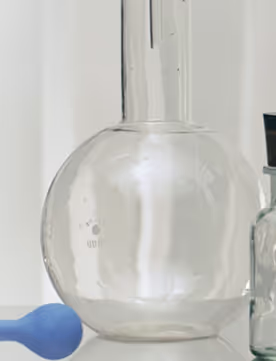Ulcerative colitis is a chronic inflammatory bowel disease categorized by inflammation and lesions in the lining of your large intestine (or colon) and rectum. The development of the disease has been linked to a number of factors, including improper immune system response, family history, and the presence of other autoimmune conditions. While certain diet and lifestyle choices may contribute to the severity of ulcerative colitis symptoms, research is largely undecided as to the main cause of the disease. In addition to medical treatments, whole body interventions that incorporate therapeutic foods and stress management techniques may help improve your quality of life. (Source, Source, Source)
In this article, we’ll provide an overview of ulcerative colitis, how dietary choices may affect your symptoms, and what to eat during ulcerative colitis flare-ups, when symptoms can suddenly and intensely worsen.
General Symptoms of Ulcerative Colitis
Ulcerative colitis occurs when your immune system mistakenly destroys healthy tissues lining your large intestine, causing widespread inflammation and lesions. Symptoms of ulcerative colitis vary based on how much the disease has spread in your large intestine and to what extent associated inflammation levels are under control. Symptoms may subside for long periods of time, known as remission periods, or they may increase during active flare-ups of the disease. (Source, Source)
General symptoms of ulcerative colitis include:
- diarrhea
- passing blood with stool
- passing mucus or pus with stool
- feeling a constant need to defecate, even though your bowel is empty
- weight loss
- fatigue
- nausea
- vomiting
- fever
- joint pain
- skin rashes
Types of Ulcerative Colitis
Think of your large intestine (that consists of your cecum, colon, rectum and anus) as a muscular tube that’s bent in an upside-down U shape. The right and left bend can be used as landmarks to track how far your ulcerative colitis has spread. In knowing the areas of your large intestine affected by the disease, your health care provider can classify the type of ulcerative colitis you have and anticipate the symptoms you are most likely to experience. (Source)
.avif)
1. Ulcerative Proctitis
Proctitis is inflammation of the rectum, and ulcerative proctitis is diagnosed when inflammation is limited to your rectum. You may have rectal pain and bleeding, and the need to have bowel movements may come on suddenly and urgently. (Source)
2. Proctosigmoiditis
Proctosigmoiditis is diagnosed when inflammation moves beyond your rectum and into the part of your colon that connects to your rectum, known as the sigmoid colon. If you have proctosigmoiditis, you may experience diarrhea and bloody stools, abdominal pain, or inability to pass stool despite the sensation of a full bowel. (Source)
3. Left-Sided Colitis
Left-sided colitis is diagnosed when inflammation is found within your rectum, and stretches up to the first bend of your colon. Symptoms of left-sided colitis may range from pain and weight loss to loose, bloody stools and urgency in passing stool. (Source)
4. Pancolitis
Pancolitis, also known as extensive colitis, affects your entire large intestine. When inflammation is widespread and far-reaching, it can cause severe diarrhea and bloody stool, pain, cramping, loss of appetite and associated weight loss, and fatigue. (Source, Source)
Ulcerative Colitis & Your Microbiome
Your large intestine is home to trillions of microorganisms, known as your microbiome, that influences your overall health. The diversity of these predominantly bacterial populations found in your gut are unique to each person, based on a number of factors including:
- family history
- genetics
- lifestyle choices
- environmental exposures
- medication and antibiotic use
- diet
(Source)
Your microbiome plays a key role in the digestive process. When you eat a meal, food is broken down first in your mouth, then your stomach, and finally in your small intestine, where nutrients from your food are absorbed. The remaining contents then move into your large intestine, where microorganisms further digest materials from your recent meal. Waste is later expelled as a bowel movement. (Source)
The microorganisms of your large intestine break down materials from your food to synthesize vitamins and produce compounds that influence your metabolic health, your endocrine system, and your mood via communication pathways known as the gut–brain axis. Most importantly, these microorganisms influence your immune response. In fact, 70%–80% of your immune system is found in your large intestine. (Source, Source)

Target Dysbiosis Through Diet
Dysbiosis, or imbalances of gut microbiota associated with disease, can negatively influence your immune response. This can lead to your immune system mistakenly destroying healthy tissues, as is the case with ulcerative colitis. Targeting dysbiosis through diet to improve ulcerative colitis symptoms is becoming more accepted as we better understand the influence therapeutic foods can have on healthy microorganism diversity and inflammation levels in the body. (Source, Source, Source)
A number of dietary interventions may help reduce your symptoms of ulcerative colitis. For example, a personalized diet designed to target low grade, chronic inflammation by removing potential trigger foods and increasing anti-inflammatory foods has been studied for its positive effect on gut health. As nutrient deficiencies are common in people with ulcerative colitis, eating a variety of whole foods and working with a practitioner to optimize digestion may improve intake of vitamins and minerals, as well as increase microbial diversity in your gut. (Source, Source)

.avif)
%20(1).avif)
%20(1).avif)

.avif)





.avif)



.avif)



.avif)

%2520(1).avif)



